Finally Released! The James Webb Delivers A Fantastic New Image We Were Waiting For
Astronomy revolves around the study of light—detecting minuscule amounts of it, filtering and dissecting it into its various wavelengths, and comprehending it, especially when emanating from distant celestial bodies. The James Webb Space Telescope excels in these tasks, as demonstrated by this recent image capturing the supernova remnant Cassiopeia A.
Before a massive star undergoes a supernova explosion, it undergoes convulsions, expelling its outer layers into space as a precursor to the impending energetic outburst. When the explosion occurs, a shockwave travels through the ejected outer layer, illuminating it with distinct energies and colors corresponding to different chemical elements. This luminosity is further influenced by any pre-existing matter surrounding the supernova. The outcome is a vast expanding shell featuring filaments and knots of ionized gas, interspersed with smaller bubbles.
“With NIRCam’s resolution, we can now see how the dying star absolutely shattered when it exploded, leaving filaments akin to tiny shards of glass behind.”
Danny Milisavljevic, Purdue University
Cassiopeia A experienced a cataclysmic explosion approximately 10,000 years ago, with the light possibly reaching Earth around 1667, though uncertainties exist. There’s speculation that the English astronomer John Flamsteed might have observed it in 1680, or it could have been first spotted in 1630, a matter left for historians to ascertain.
Regardless of the precise date, the light from Cassiopeia A has reached and continues to reach Earth, rendering it a subject of profound astronomical interest. It stands as one of the most extensively examined supernova remnants (SNRs), with astronomers utilizing various telescopes to observe it across multiple wavelengths.
Spanning about 10 light-years, the SNR is currently expanding at velocities ranging between 4,000 and 6,000 km/second. Certain peripheral knots exhibit even higher speeds, ranging from 5,500 to 14,500 km/s. The expansive shell is remarkably hot, registering at approximately 30 million degrees Kelvin (30 million C/54 million F).
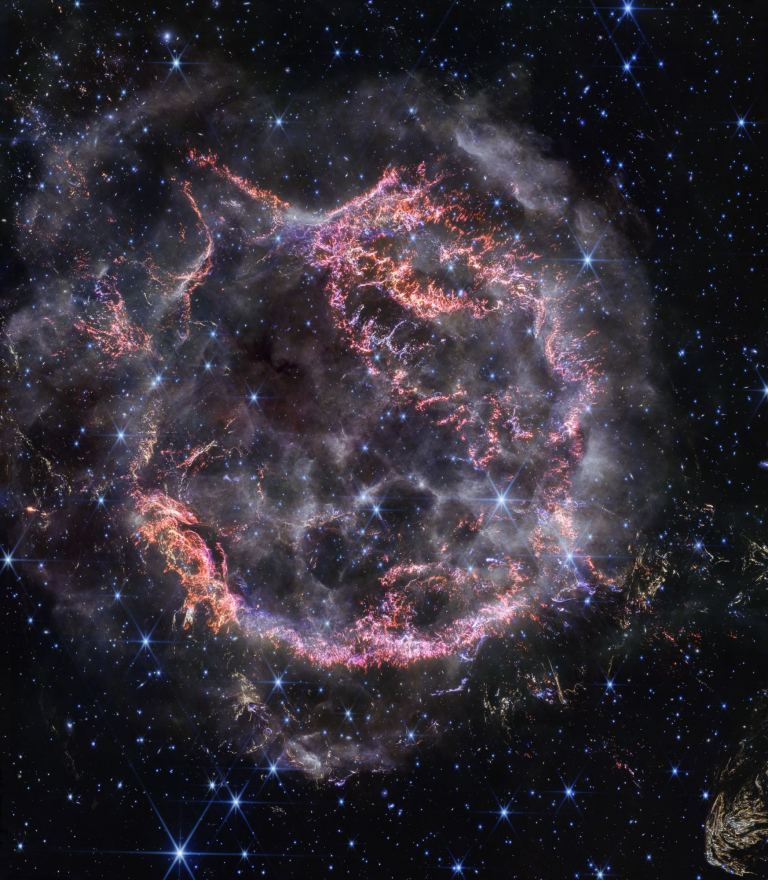
Our previous images don’t come close to the awe-inspiring nature of these JWST images. Beyond mere aesthetic appeal, these images go beyond being just visually stunning. The elegant swirls and intricately knotted clumps of gas unveil intricate interactions between light and matter in nature.
The JWST operates in the infrared spectrum, necessitating the translation of its images for human perception. The telescope’s ability to capture specific wavelengths is rendered in various visible colors. Particularly striking in these images are clusters of vivid orange and pale pink, indicating the presence of sulphur, oxygen, argon, and neon. These elements originated from the star itself, with the surrounding region’s gas and dust seamlessly blending with them.
The image below focuses on specific sections of the Cassiopeia A supernova remnant (SNR).
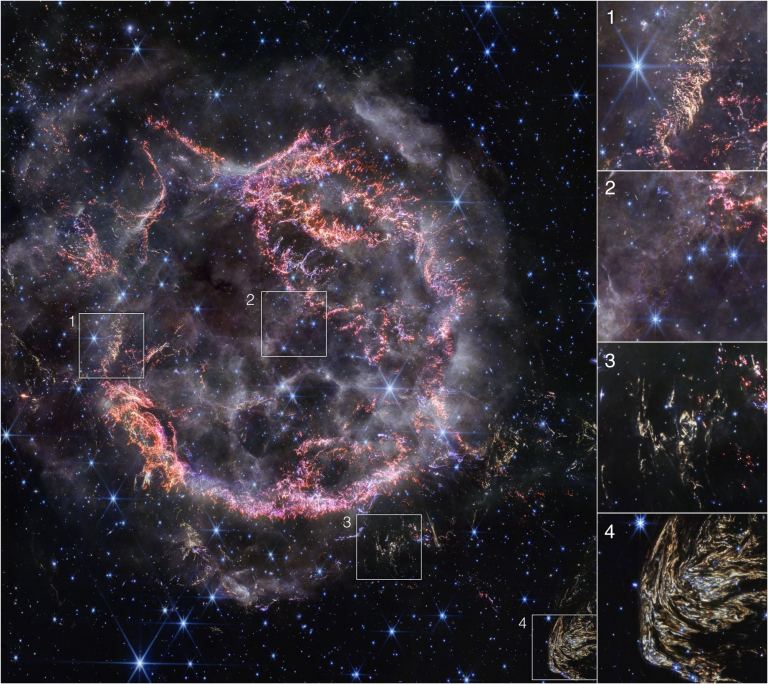
In the MIRI image captured by the JWST, distinct details emerge. The periphery of the primary shell does not exhibit the characteristic orange and pink hues; rather, it resembles smoke illuminated by the flames of a campfire.
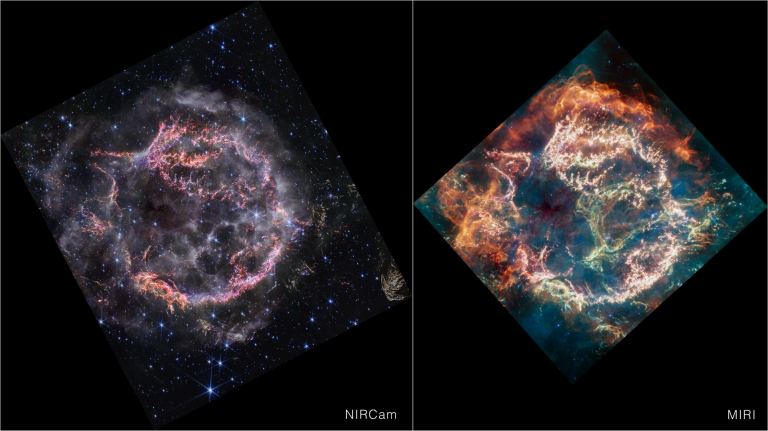
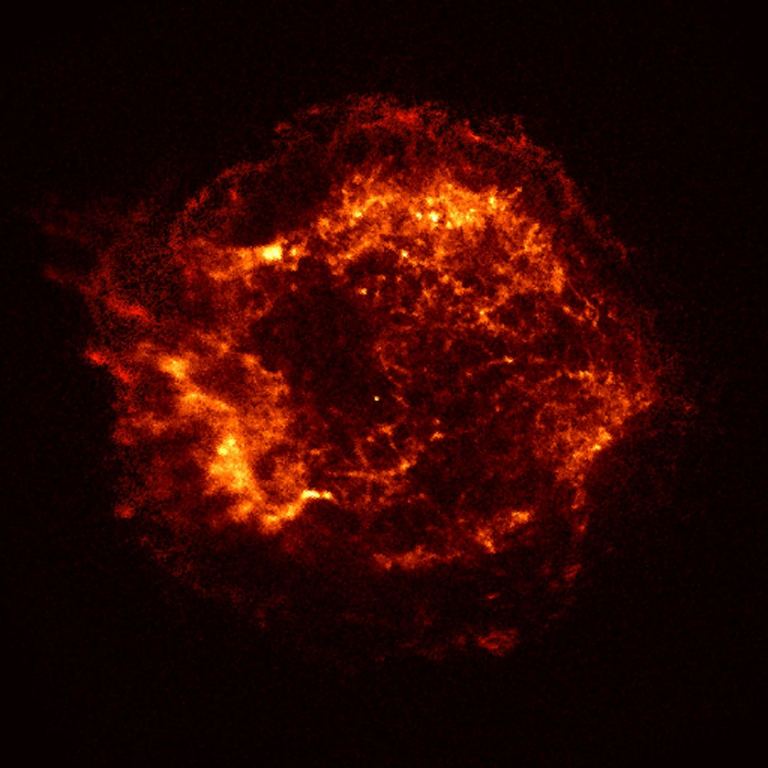
The Hubble Space Telescope also captured images of Cas A, with this particular composite dating back to 2006 and comprising 18 distinct images. Although intriguing and breathtaking at the time, the image obtained by the JWST surpasses it in both visual appeal and scientific intricacy.
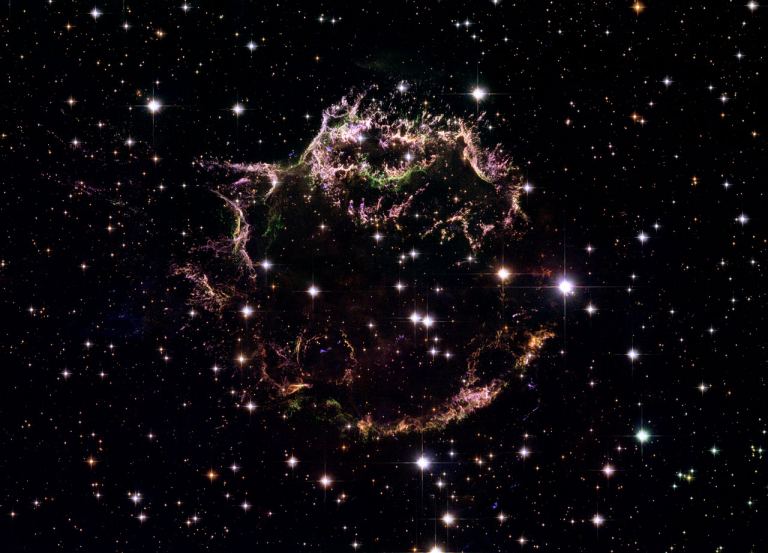
The remarkable images captured by the JWST are offering an unprecedented, detailed examination of Cas A. Danny Milisavljevic, who leads the Time Domain Astronomy research team at Purdue University and has extensively studied supernova remnants (SNRs), including Cas A, underscores the significance of the JWST in his research.
“Thanks to NIRCam’s resolution, we can now observe the intricate details of how the dying star fragmented during its explosion, leaving filaments resembling tiny shards of glass,” Milisavljevic noted. “It’s truly remarkable that, after years of studying Cas A, we can now resolve these details, providing us with transformative insights into the dynamics of this star’s explosion.”
Do not forget to share your opinion with us to provide you with the best posts !



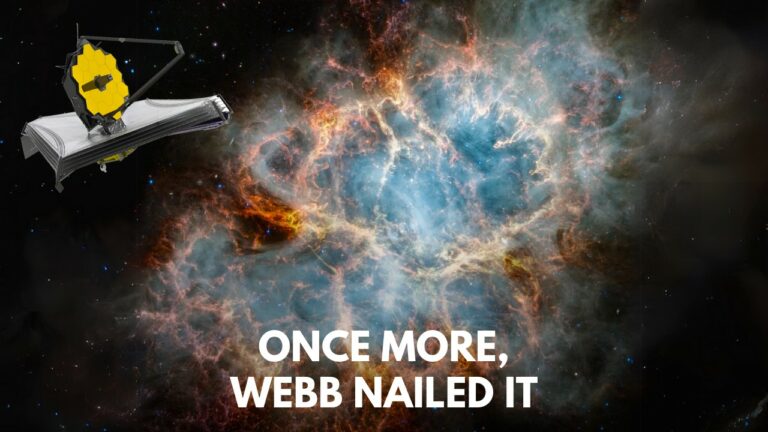
0 Comments